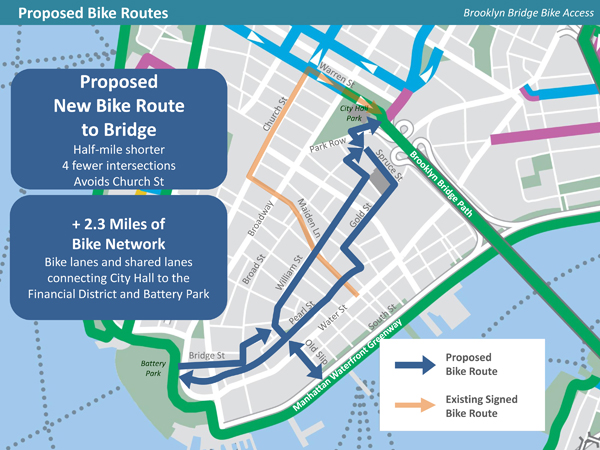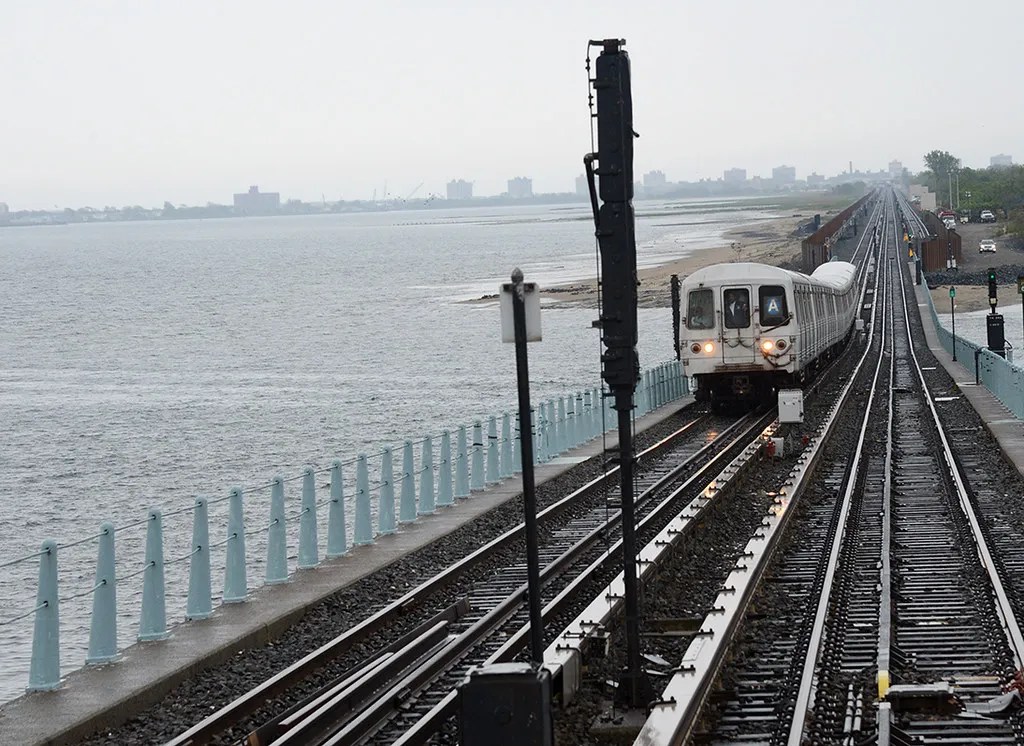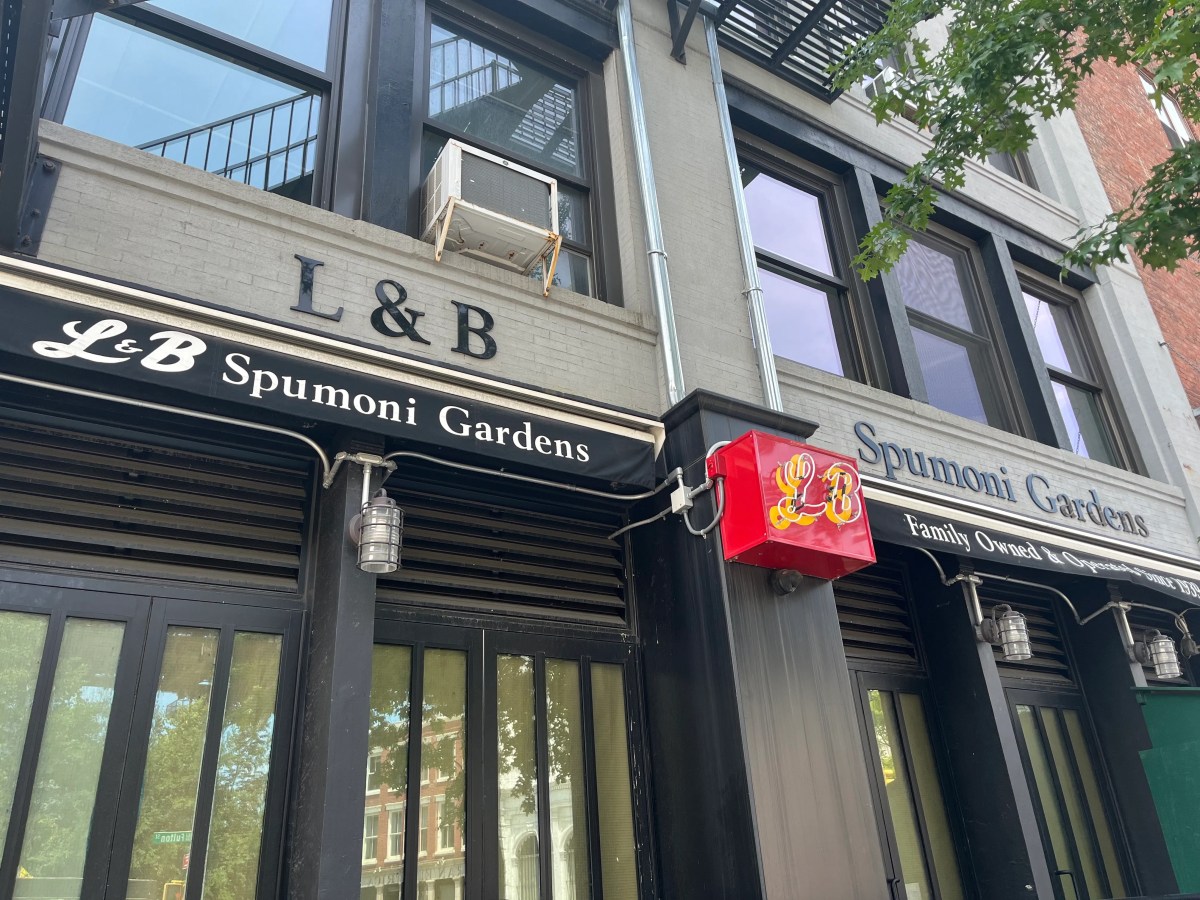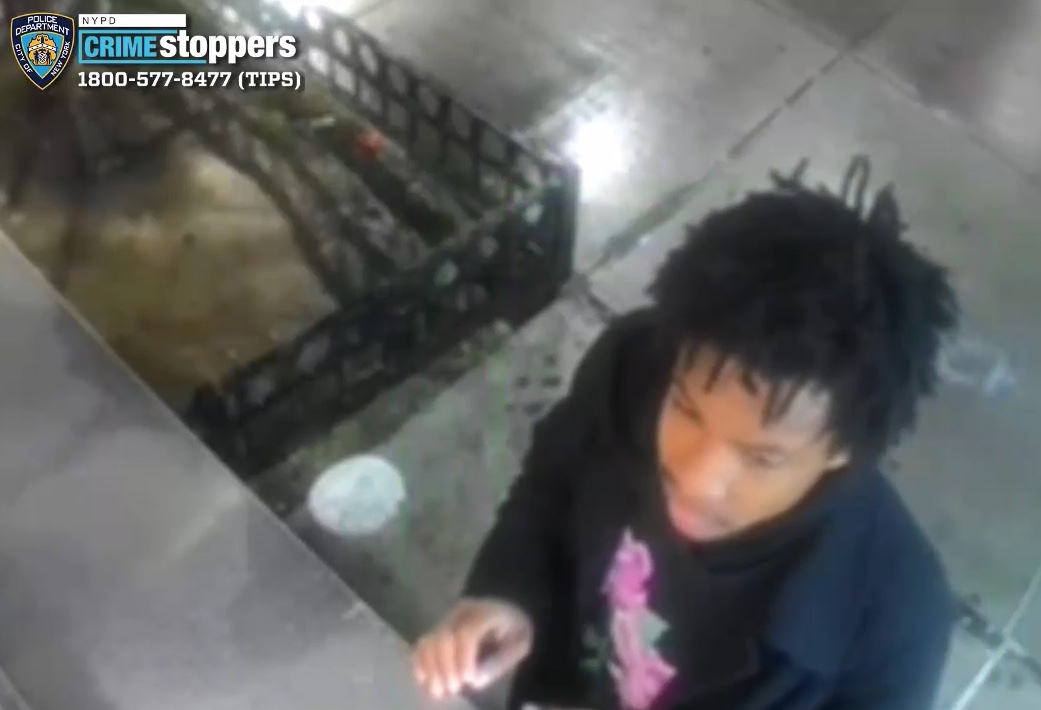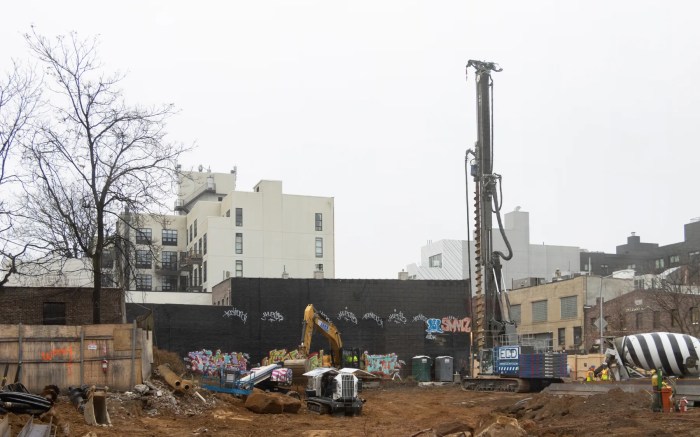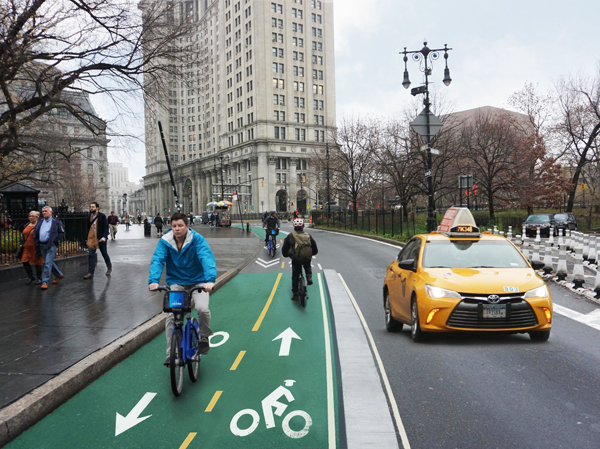
The city’s plan would give cyclists a protected bike lane to access the Brooklyn bridge.
BY DENNIS LYNCH
The Department of Transportation wants rejigger bike lanes, pedestrian crossings, and some parking in Lower Manhattan to improve safety for cyclists, representatives told Community Board 1’s Planning Committee.
The bulk of the proposed changes concern the intersection of Centre Street, Park Row, and Spruce Street, near where the Brooklyn Bridge lets off scores of pedestrians and bikers, many of them out-of-towners unfamiliar with the often-hectic scene there.
The DOT said more than 1,600 cyclists bike there on a typical day, and 28 percent of them bike against traffic, while nine percent illegally ride on the sidewalk.
To keep bikes safely on the roadway, the DOT would paint a two-way bike lane along that stretch and protect it from traffic with a small sidewalk-height curb. The agency also wants to make the path to the bridge bike path entrance more obvious, so cyclists don’t find themselves biking onto the bridge roadway.
There would also be a new crossing across Park Row from the east side of Spruce Street and a better crossing on the west side of Spruce Street. Both would feature median extensions to shorten the trip for pedestrians across Park Row.
The DOT would eliminate four placard parking spots on the north side of Centre Street, but would create nine new ones along an expanded median along Park Row between Beekman and Spruce Streets.
Outside of that intersection, the DOT wants to streamline the bike route between the Brooklyn Bridge and The Battery and Lower Manhattan’s eastern waterfront. Instead of sending bridge-bound bikers on Maiden Lane to Church and then Warren Street, the new route would steer them mostly along William Street. The plan would send southbound bikers coming off the Bridge down Spruce Street to Gold Street and then Pearl Street.
Parts of that route would have dedicated bike lanes, but most of it would feature shared lanes — painted bike markers on lanes that bikers would share with cars and buses — and painted lines to better formalize parking lanes. Where the DOT wants to create dedicated bike lanes, it would take five feet from the normally 12-foot-wide parking lanes on either side of the streets, leaving one nine-feet wide and the other ten-feet wide.
Some streets would get their own unique schemes, however, including parts of Gold Street and Old Slip. All of the new routes would get new signage to help bikers find their way and stay out of trouble.
The proposal presented at the March 13 meeting does not require CB1 to take a formal position on the changes, but the Planning Committee was largely receptive of the plan — although some members did raise concerns, particularly about shared lanes, which some board members said they thought could be dangerous for bikers.
The DOT characterized many of the changes as formalizing the ways bikers already get around and that the new routes wouldn’t send bikers into dangerous conditions. Committee member Michael Ketring said he personally supported the plan and the shared lanes.
“We can’t let the perfect be the enemy of the good,” he said. “Clearly William Street south of Wall Street has challenges — it’s narrow, it’s tight, but my experiences as a bike rider when I’m on a shared lane, I do think traffic goes a little bit slower, drivers are a little more aware. Would I prefer a protected lane with a barrier? Sure I would, but we do what we can, so I do think [the DOT] has done a good job with it.”
DOT representative Preston Johnson agreed about the subtle safety effects of shared lanes.
“It seems from my observations that it gives some confidence to some cyclists who need confidence about where they should ride, that they do have this legitimate place on the street,” Johnson said.
DOT representatives said that they planned to start work this summer. Concrete work could take “several weeks” and lane painting roughly a week, they said. The DOT does not plan to add any more Citibike stations as part of the changes.
